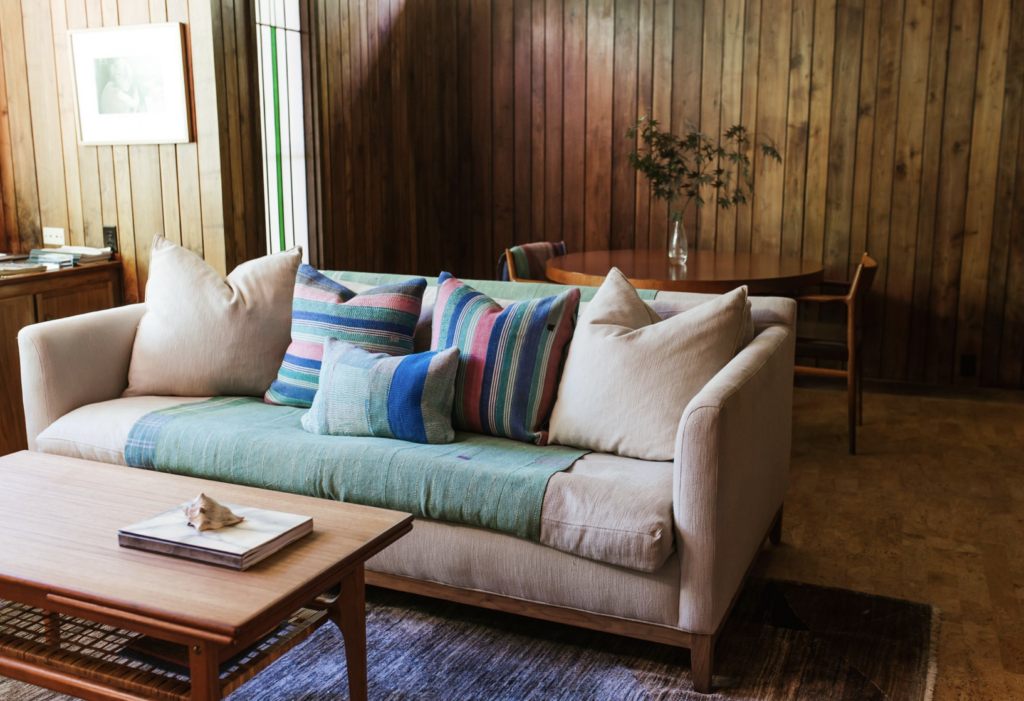How to Navigate the Changing Landscape of Getting Your Interior Design Projects Published
While there are more opportunities than ever to see a project published, landing a placement requires some deft skills and buckets of patience. We’re here to answer some of your most pressing questions about getting a project published in this ever-shifting landscape of editorial.
You pitched your best new design project. Crickets. Do you assume the editor is not interested and move on?
There are two camps of freelance writers/editors. There are those who go so far as to tweet that if you didn’t hear back, assume they’re not interested. If they responded to every email, when would they possibly have the time to write, they say? And others who encourage you to always follow up a pitch. Often, it’s the follow-up that is just the reminder the needed to make a decision. As a team, we always err on the latter side and follow a pitch up two weeks after pitching.
You followed up, still nothing and it’s been over a month. Can you take the project to someone else, keep waiting or follow up again.
For a design project, a month is about the time you need to give an editor for a real consideration. They often have to pass the project through multiple editors for feedback before they can give you a response. But one follow-up is plenty.
It’s good practice, however, to send a short email to the editor after month to let them know that you pitched the project to them first and, as you’ve not heard back, you assume it’s not a fit for the magazine. Let the editor know you appreciated the consideration!
You or your publicist is getting a lot of opportunities to comment as an expert for online publications. While it is technically “press” you don’t feel like it’s always a good fit. It also takes a lot of time to answer thoughtfully. How do you focus on quality vs. quantity?
If you’re a newbie to receiving press, often these placements can be a great exercise for learning how to work with writers and editors and they do provide you something to share while you are waiting to land larger placements. Additionally, sometimes these smaller tip-driven pieces are a gateway to a larger placement because, quite often, the same writer is contributing to many larger titles too. There will come a time, however, when you’ve built a body of press and projects and you’re ready for next steps and you should have that candid conversation with your publicist and/or simply pass on the opportunities with the freelancer who approaches you directly when they don’t make sense to participate in.

What’s up with so many editors now joining the ranks of freelancers?
You’re correct in noticing droves of longstanding editors changing their Instagram bio to freelancer (which is why the Freelance Writer section of our Media List is PR gold because there is constant movement in their contact info!). Publications are pairing down their editorial staff and using more freelance writers to produce their pages, in print and online.
Note: just because they leave the magazine does not mean they are no longer contributing to the pages. Many are writing as much, if not more, for their former employees while adding more publications to their roster of clients. Creating relationships with freelancers by pitching them quality material and being consistent and patient, pays big dividends over time. Many also have newsletters that you can subscribe to, which is another show of support and attempt to really track their freelance journey and needs.
You secured a placement in a magazine and they want to use the images you pitched but they don’t have the budget to pay usage rights to the photographer. What?
The editor is likely shooting straight. Not all magazines have the budget to reshoot a project or to pay for photography. Some will offer to pay a small fee for usage. In addition, they’re inundated with great projects and project photography from designers who have paid a little more and secured usage rights with the photographers in their contract. If you intend to pitch the projects you are having photographed, address this with the photographer up front.
By contrast, you land a placement with images with full usage rights. Now the magazine wants to reshoot?
Often, it’s worth it to the publisher to photographer a project where they see the opportunity for using the images in a number of the other special interest publications under their main title. Once you establish a relationship with an editor, they may tell you that if you have a great project, to send them iPhone scouting shots. They may then choose to style and photograph it in a way that reflects their magazine’s’ look and then maybe use auxiliary shots for other, more focused, publications. As one editor told me, “Charming houses can really get a lot of mileage across our media brands if we own the rights. If we have to pay the photographer every time we run the images, those fees add up. I’m all for using them, but I also have to manage a budget.”

You really love print and want your best project to be featured in the pages of a magazine? How far in advance are editors working?
Placing interior design projects in a magazine has a different timeline entirely than all other press so it’s important to know, in advance, what this could potentially look like. While a regional editor may be working on issues that are three months out, she and her team are filling pages dedicated to projects for the calendar year as projects are received. One issue that all magazines work a year in advance is the December issue, as these rooms would be photographed when fully styled.
National publications, however, are often working two years out. In January of 2023, for example, my team placed a project assigned to the Spring 2024 issue. So don’t be surprised, if your project is accepted, to be asked to hold off on posting images on social or on your website until the issue is on the stands.

You pitched a project to try and land in print and now the editor is offering you the placement in their digital pages only?
This is where it is always good to remember that, ultimately, the decision is made by the editors. If you want to ensure that it makes it to the pages of a magazine, pitching a local publication may be the best path for achieving that goal. Larger titles are also looking for projects for their online House Tours section and these are truly coveted placements and often hard for anyone to land. Rescinding your project after pitching for consideration would not leave a great impression with the editor. When creating your pitch strategy, always maintain flexibility and graciousness when working with editors. Look to play the long game of landing press and premium placements. It’s really the relationship with the editor/writer that you want. Over the years, it will produce more than one piece of press.
